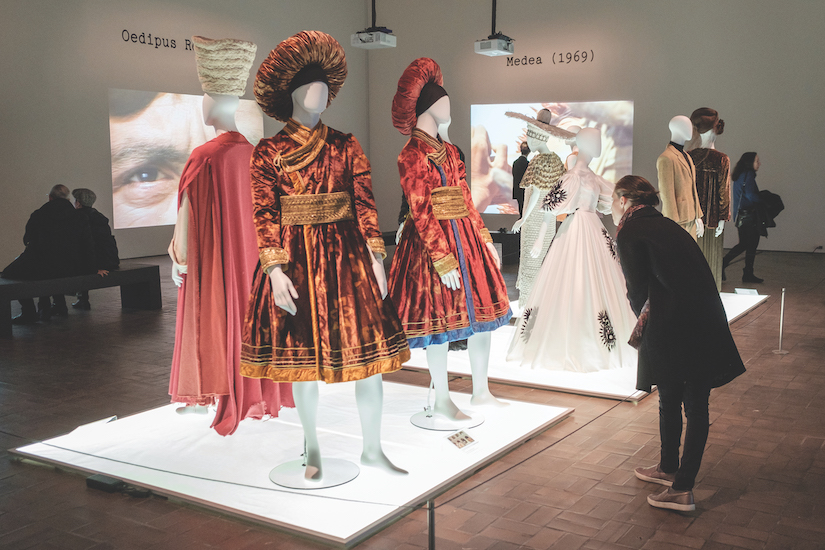“Pier Paolo Pasolini: Subversive Prophet” — an exhibit of writings, photographs, movie clips and costumes that weave together the life and philosophy of the complex, controversial Italian film director — is on view at the Neuberger Museum of Art through May 31.
At present, the museum is closed due to the coronavirus and its resulting disease, COVID-19. But we wanted to present some of the costumes from the show — organized by Patrice Giasson, the museum’s Alex Gordon curator of the art of the Americas — to offer you a taste of the exhibit and a tangible way into the director’s dense duality. Pasolini was an early fascist who became a communist, an atheist who would later describe himself as a “Catholic Marxist,” a gay man brought up on morals charges who would create strong roles for such powerhouse female performers as Anna Magnani and Maria Callas, with whom he had an intense relationship. His brutal Nov. 2, 1975 murder on a beach in the Roman district of Ostia — like something out of Tennessee Williams’ “Suddenly, Last Summer” — remains a subject of open-ended controversy some 45 years after it was identified as a mob killing.
Not surprisingly, Pasolini found a kindred spirit for his duality in the hurly-burly of New York, which he described in a 1969 New York Times interview as “the most beautiful city in the world. I love the huge mingling of the enormous amounts of people, races. The mixture of cruelty and innocence. New York is a piece of mythical reality, as beautiful as the Sahara Desert.”
Perhaps more important, Pasolini (1922-75) — who lived through some of the most troubled moments in Italian and world history — speaks to our own time, in his criticism of both the right and the left; and his warnings about the evils of consumerism, the pitfalls of globalism and the manipulation of new media, which in his day was television.
“Pasolini had a very vibrant person, persona, but his voice, his tone is humane and tender,” Giasson says. “It is the voice of a poet.”
The addition of costumes from Pasolini’s films to the show were, he adds, an afterthought, but they “ended up being one of the most unifying things in the exhibit.”
Indeed, they are the perfect entrée into the director’s intellectually rich fiction and nonfiction, particularly his Arthur Rimbaud-inspired poetry, as well as his films, with their fascinating yet sometimes off-putting blend of compassion and barbarism. Created out of wool and other natural materials by Danilo Donati for Farani Sartoria Teatrale, the costumes are at once modern — mod even — and contemporary, humble and luxurious, serving subjects that represent in part the Western canon, including Greek mythology (“Medea,” “Oedipus Rex”), the Christian Bible (“The Gospel According to St. Matthew”) and medieval literature (Giovanni Boccaccio’s “The Decameron,” “The Canterbury Tales” of Geoffrey Chaucer, whom Pasolini played in the film).
Giasson and his Purchase College team have juxtaposed the costumed mannequins that take pride of place in the museum’s cavernous Theater Gallery with intriguing clips from the films that enable the viewer to see the costumes come to life. (Readers can do this for themselves by calling up clips from the films on YouTube.) For the doomed Theban Queen Jocasta in “Oedipus Rex” (1967), Donati created a short cape made of golden shells, to indicate the queen’s wealth. Her raffia-like ensemble suggests not only the natural materials that would be available in ancient Greece but something that might be found on today’s runways, natural fibers being a big trend.
Similarly, Callas’ kohl-rimmed eyes, so expressive as she plots a horrific revenge on the husband and patriarchy that use and discard her in “Medea” (1970), would not be out of place on the red carpet today.
The costumes and makeup in Pasolini’s films, which one YouTube poster described as “a real joy for the eye,” speak not only to fashion’s ability to borrow from every period and place but to the timeliness of Pasolini’s subjects and themes.
For more, visit Neuberger.org.


